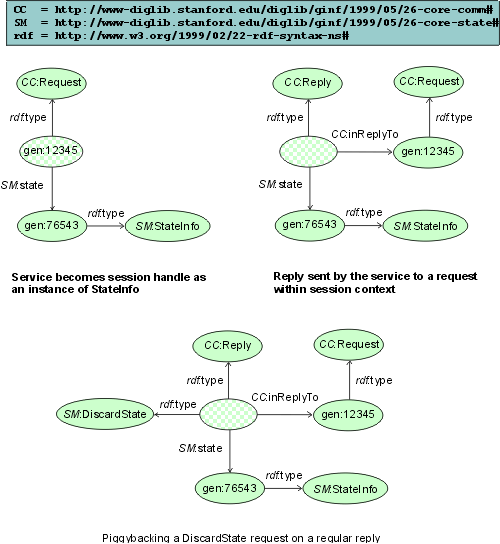Session management (original) (raw)
Working Draft
A SessionLayer manages stateful communication. Every message is passed between a client and a server within a session context. Session identification is achieved by attaching a state property to a Message. The SessionLayer may deploy different state maintenance policies. For example, if it uses a connection-oriented transport (e.g. HTTPLayer), it may choose to associate a session with an established connection. Another possible policy would be to require the client to pass the state assigned to it by the service with any subsequent request. This policy would make session management resistent to connection failures.
The SessionLayer is responsible for:
- creating a new session for every Message sent by the client that lacks session information (Note that the session information may be implicit, i.e. identified by the TCP/IP connection used.).
- notifying the service if the client terminated the session (this can be determined by connection hangup, timeout or using some other policy)
- optionally notifying the client if the server terminated the session The service that uses the SessionLayer is responsible for attaching a stateproperty to the Reply it delivers to the client in order to establish a session and to inform the client about its session ID.
To terminate a session a client or a service can make the Reply orRequest additionally of type DiscardState. On receiving such request the SessionLayer will process the original message (e.g. deliver the Reply) and terminate the session after that.
Examples:

See also: Core Communication,HTTP, TCP/IP
Sergey Melnik. Last modified: 06/01/99